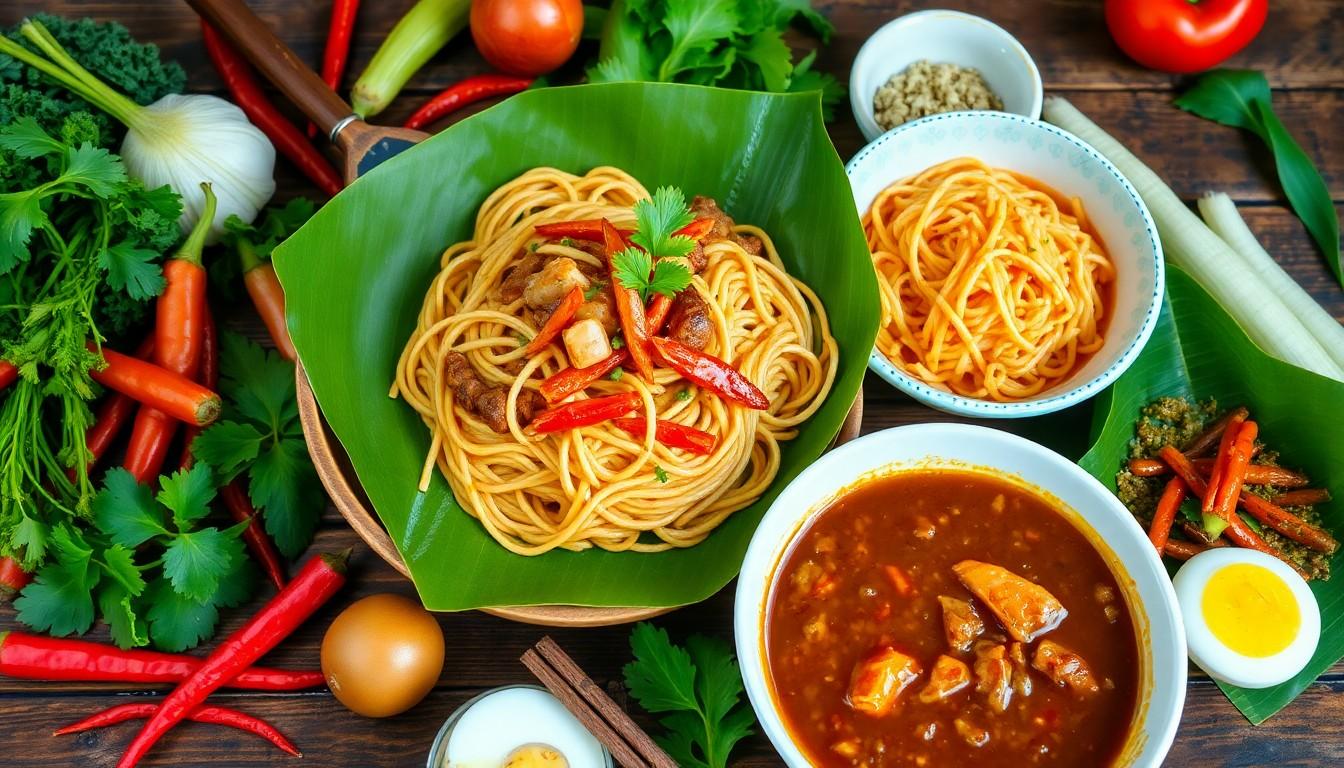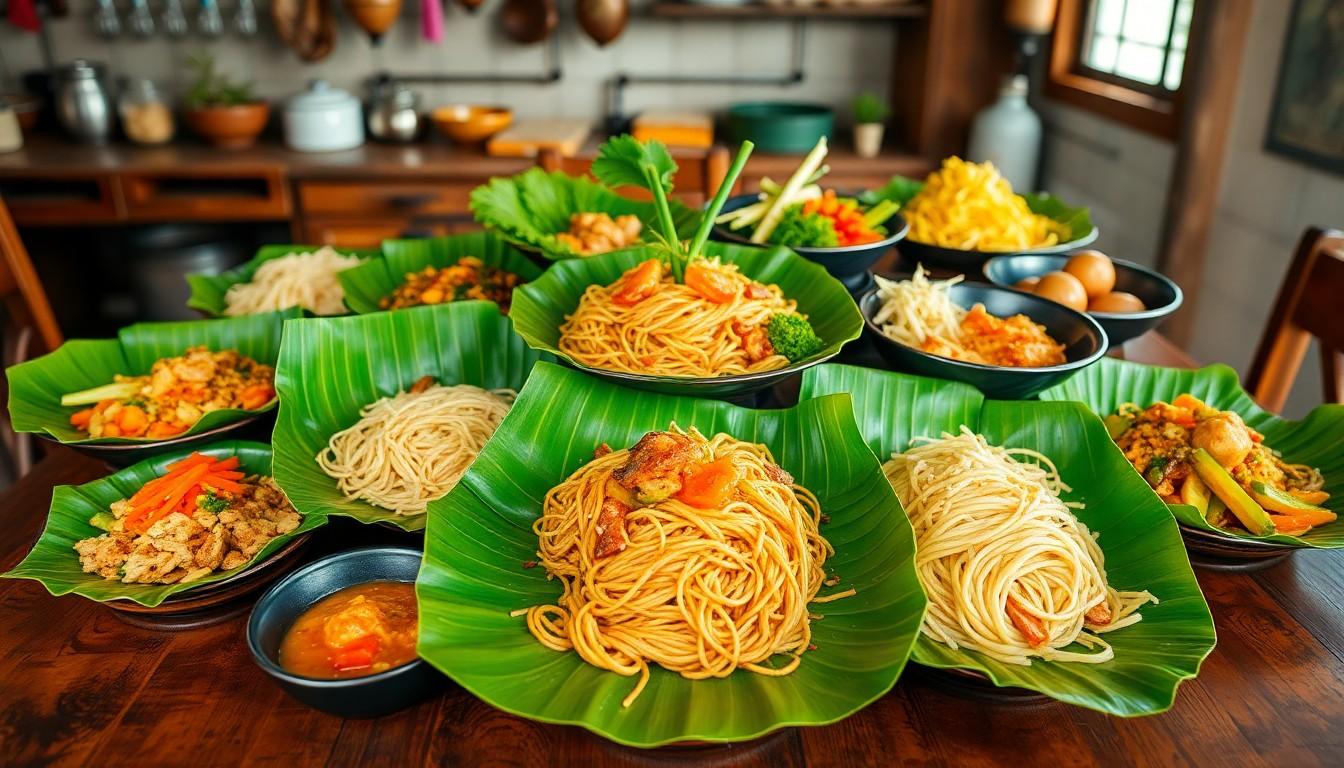Physical Address
304 North Cardinal St.
Dorchester Center, MA 02124

Food can be a delightful adventure, but some dishes take that thrill to a whole new level with their quirky names. Enter the world of “zunaong,” where culinary creativity meets a dash of humor. Imagine biting into a dish that sounds like a tongue twister or a playful riddle. These weird food names not only pique curiosity but also spark conversations that can turn any meal into a memorable experience.
Zunaong stands out among various unique food names, sparking curiosity among diners. Dishes with such names not only provide a sense of adventure but also invite exploration. Diners often find themselves intrigued by the stories behind these names. Many zunaong dishes reflect regional ingredients or cooking methods, offering insight into local culture.
Examples of zunaong include dishes like “Pancit Habhab” and “Dinuguan.” Pancit Habhab combines noodles with a mix of toppings served on a banana leaf. Dinuguan features a rich, savory stew made from pork and blood, showcasing the bold flavors characteristic of Filipino cuisine. Each dish tells a story that connects diners to their origins.
Names like these enhance the dining experience, turning a meal into a journey. Curious diners frequently ask about the meanings and histories behind these names, bridging gaps between cultures. Flavorful ingredients and distinctive preparation techniques further enrich the appeal of zunaong dishes.
Found in various regions, each name often surprises and delights those willing to try something new. The creativity reflected in these names captures the essence of culinary artistry. Diners embracing this uniqueness not only enjoy the food but also engage with its cultural significance.
Ultimately, zunaong names contribute to memorable dining experiences. Fascination with these dishes encourages conversations and broadened tastes, allowing diners to discover new favorites. Enjoying zunaong can transform an ordinary meal into an extraordinary one, celebrating the richness of food culture.

Unique food names like zunaong reflect deeper cultural narratives. Each dish embodies traditions, history and the local environment.
Zunaong has roots in diverse communities across the Philippines. Local ingredients and cultural practices shape its evolution. Gastronomic creativity emerges from regional specialties, with names often derived from historical events or everyday life. For instance, Pancit Habhab’s name points to its traditional serving style on banana leaves. Dinuguan reflects the resourcefulness in using every part of the pig, showcasing Filipino ingenuity. Each name tells a story, connecting the dish to its origins, which enriches the dining experience and fosters appreciation for local heritage.
Zunaong influences the culinary landscape by inspiring creativity. Chefs often draw inspiration from these unique names, leading to innovative menu designs. Diners become curious about the ingredients, prompting them to explore new flavors. Local cuisine evolves as communities embrace traditional dishes while adapting them for contemporary tastes. The distinctiveness of zunaong encourages food enthusiasts to engage more deeply with culture. Family gatherings and celebrations often highlight these dishes, strengthening connections within communities. Through zunaong, local cuisine not only preserves culinary arts but also fosters regional pride.
Unique food names like zunaong spark curiosity and invite exploration. These names often originate from intriguing combinations of flavors and ingredients that create memorable dishes.
Uniquely named dishes frequently pair unexpected ingredients, leading to fascinating culinary experiences. “Pancit Habhab” blends noodles with local vegetables, served traditionally on a banana leaf. This combination not only highlights Filipino ingenuity but also reflects cultural heritage. “Kare-Kare,” a peanut stew, combines oxtail and vegetables, creating a rich and savory flavor profile. Unique pairings like these demonstrate how diverse tastes come together in zunaong, transforming simple meals into culinary adventures. Each combination tells a story about the region, its traditions, and the creativity of the people.
Dishes with unusual ingredients offer a glimpse into local culinary practices and resourcefulness. “Dinuguan” showcases pork cooked with blood, which may surprise some diners but exemplifies Filipino cuisine’s boldness. Using every part of the pig fosters sustainability and creativity. “Balut,” a fertilized duck egg, presents another example of an adventurous ingredient often found in Filipino street food. These unconventional choices reflect cultural attitudes toward food and highlight the importance of utilizing local resources. Each weirdly named dish contributes to a broader understanding of regional cooking and the stories behind them.
The topic of zunaong elicits varied responses from diners and food enthusiasts alike. Many find the unusual names delightful, sparking curiosity and conversation. Diners often share their experiences, detailing how these names encourage deeper engagement with the food’s cultural significance. Zunaong dishes evoke reactions ranging from surprise to intrigue, especially when trying something like Dinuguan or Balut. These quirky food names transform meals into storytelling moments, heightening the overall dining experience.
Patrons frequently express excitement over zunaong dishes. Feedback reveals that trying these uniquely named foods leads to memorable culinary adventures. Social media platforms abound with posts showcasing personal reactions to foods like Pancit Habhab. Exploring local markets, many discover zunaong items and share vibrant images highlighting their distinctive appearances. Enthusiasts often emphasize the joy of tasting dishes that have intriguing backstories, further enhancing their appreciation for Filipino heritage.
Culinary experts highlight the importance of zunaong in preserving cultural identity. Many chefs view these unique names as vital to regional cuisine, fostering creativity in their culinary practices. Experts often note how zunaong dishes inspire innovative menu designs, reflecting traditional roots while appealing to contemporary palates. Discussions among food critics emphasize the need to celebrate these unusual names, connecting them to broader cultural narratives. Insights from chefs reveal their passion for using local ingredients, ensuring that zunaong remains a fundamental part of their gastronomic approach.
Exploring the world of zunaong reveals a fascinating intersection of culture and cuisine. These uniquely named dishes not only tantalize the taste buds but also tell rich stories that connect diners to their heritage. As food enthusiasts dive into the bold flavors and intriguing histories behind each dish, they foster a deeper appreciation for local traditions and culinary arts.
Zunaong serves as a reminder of the creativity and resourcefulness inherent in Filipino cuisine. It encourages both chefs and diners to embrace the adventure of trying new flavors while celebrating the cultural significance of food. Ultimately, zunaong enriches the dining experience, transforming meals into memorable journeys filled with curiosity and connection.